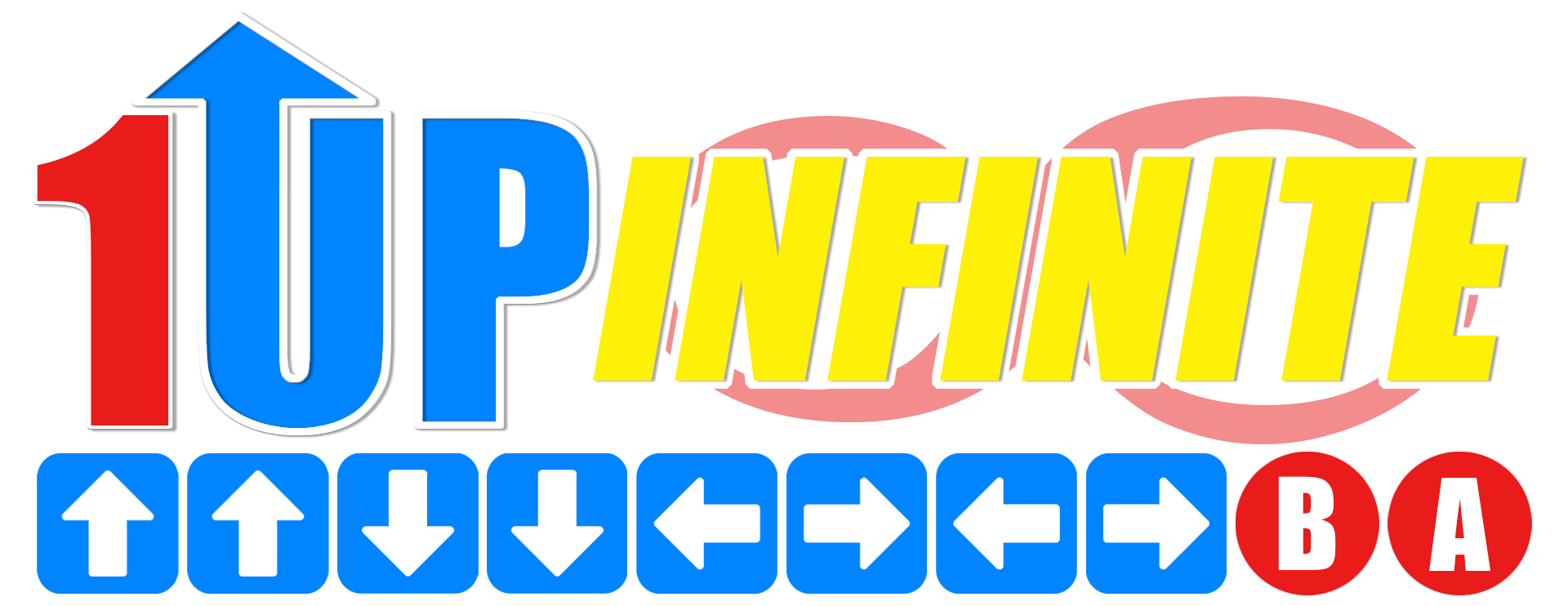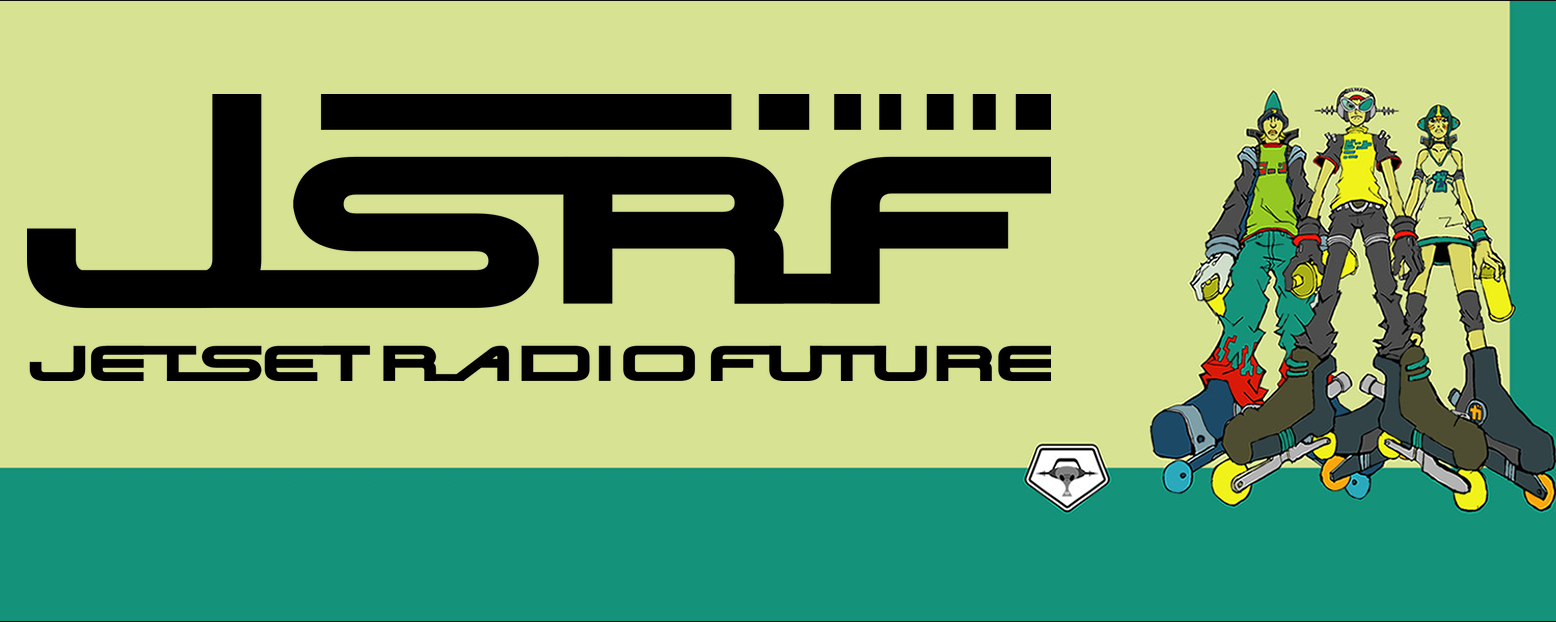There are fewer titles that are as coveted with a seemingly increasing fanbase over the years than Jet Set Radio Future. The name alone evokes memories of a time when developers were liberal in bringing their visions to life. It was a sequel that became more popular due to the ease of access compared to its original title, Jet Set Radio. While it’s true more households would have an Xbox over a Dreamcast, Jet Set Radio Future was a title many considered to be superior to its predecessor in almost every way.
I wouldn’t put this to the test until 2009, a year that finally allowed me to own a Microsoft console for the first time in my life. One of the major selling points of the Xbox 360 was its backward compatibility with the original Xbox. As PlayStation 3s were released without backward compatibility in mind in order to cut costs, it was an understandable reason for players like myself. As this is the first original Xbox game I’m covering on 1 Up Infinite, here’s the stinger.
I’ve never owned an Xbox. Here was a console that could play Xbox titles as well as newer titles while sharing a library with the PS3, its competition. This, coupled with the fact that Xbox emulation was in its infancy, meaning that owning an Xbox 360 was a no-brainer. For the first time, I was able to play Xbox-exclusive titles including Jade Empire, Dead or Alive 3, and of course, Jet Set Radio. I was able to purchase the double pack that came with several Xboxes, which included Sega GT 2001, In 2009, Gamestop was selling this double pack, used yet complete with the game manual and original box art, for two bucks.

Nowadays, used, it’s over ten, sometimes twenty times the amount depending on who’s selling. That weekend I spent hours after school playing the game until I eventually beat it a week later. As a fan of the original Jet Set Radio, I didn’t feel the same emotions playing Future as I did with the original. I adored it, of course, the aesthetics and music were impressive. There was just something missing.
Fast forward over a decade later and advancements in modern technology made the impossible, possible. Jet Set Radio Future has been fully accessible in ways never possible before, and compatibility continues to improve. While I don’t know why, to this day, Microsoft never made Jet Set Radio Future backward compatible with the Xbox One and Xbox Series X, I had a chance to play it again after all these years. I think I’m able to determine why I never got that buzz of excitement playing Future as I had with Jet Set Radio.
Jet Set Radio’s beginning was centered around a young “ruddie” named Beat, who is trying to form his own rollerblading gang of graffiti taggers — The GGs. The player is introduced to Gum and Corn, who would be the founding members of the roller gang after completing what’s essentially Jet Set Radio’s tutorial. Future begins the same, except instead of Beat, the starting character is Yo-Yo, a character who plays a far greater role in Jet Set Radio Future than in the original.

So what happens to Beat? Well, he turns into a snitch. Literally, the first chapter involves chasing Beat, who was talking down on the GGs and beating him in a race. It’s convenient that the cops show up just as he decides to join our gang and hide out in the garage. So much for the former “hero” protagonist huh?
Similarly to other games, we looked at in the past, like Rumble Roses XX, Jet Set Radio Future is neither a “sequel” or a “reboot” to the original. According to Hideki Naganuma, Jet Set Radio Future is “Another story by another characters in another world, in another time axis.” It’s the Jet Set Radio multiverse, basically.
Without going into depth quite yet, this section is enough to show how Smilebit went with an “action” approach to Jet Set Radio. The original played like an arcade platformer in which the player’s goal was to tag everything in a level within a time limit. Upon completing a level, they are sent to the garage which acts like the game’s main menu. In Jet Set Radio Future, the game turns into an open world in which each level connects to the other, turning Tokyo-To into a vibrant interactive city.
Of course, certain areas are locked off to the player until the plot demands it. There are locations in which the character will simply turn back, nudging the player that there are still objectives to complete in an area. The general gameplay remains the same – all graffiti spots need to be tagged in a certain area for a cutscene to play. This is usually followed by a challenge from a rival skater only for them to join your party upon completion. Other times, the GGs will fight with either the enemy gangs or the keisatsu.

The Tokyo police return, only this time instead of the quirky 70s-inspired Captain Onishima, we have Hayashi, a silver-haired nasally sounding idiot who eventually gets phased out for Goji Rokkaku, just like Onishima in the past. More on this later, but for now, the gameplay of Jet Set Radio Future allows the GGs to actually fight back. In the previous game, it was always “run away” at first sight. Now, the skaters can tackle their enemies and spray paint them until their “health bar” depletes.
Everything received an overhaul to ensure that Jet Set Radio Future retained a fast-flowing pace. The trick mechanic allows the player to link several grinds in succession, with the X button weaving simple grinds and the Y button implementing advanced 180-degree turns. Both buttons require a certain rhythm to keep up and the longer the rhythm persists, the faster the player grinds on rails.
This was actually a good response to a common annoyance in the previous game. Grinding rails is no longer based entirely on momentum but on user input. Riding fakie in this game is as simple as pressing Y while on the ground as opposed to Jet Set Radio’s shuffling of the analog sticks. Tagging has received the biggest change as simply holding the RT button will cause the player to automatically fill in empty spaces.

Subjectively speaking, I always preferred the tagging system in Jet Set Radio. Using the analog stick to pull off combo chains for the XL pieces always felt satisfying. It made me feel like I was doing the tagging myself. While the tag function is automated, it doesn’t break away from the fast-paced flow of Future and it reflects on the levels as well. There’s an impressive sense of verticality as if the player is instinctively learning to reach the top of each level to find hard-to-reach “heaven spots” to tag and find other secrets.
Some levels, like 99th Street, encourage this by having a dragon that players can grind on all the way to the top. This is similar to the Benten Tower in Jet Set Radio except the player chooses where to go following the dragon’s ascent. The sheer amount of detail given to a game that was effectively a launch title on the Xbox is impressive. Running around in circles trying to get to that last remaining graffiti tag only to fall from mistiming a button input, isn’t.
The incredible level design both works with and against the player, as there’s simply a lot going on with the environment for the sake of “exploration.” There are many dead-ends that can cause a new player to scratch their head, only to realize that what’s stopping them is an event in an unrelated level elsewhere. Rokkaku-Dai Heights remained a puzzling experience for me until I realized I had to go to Chuo Street to trigger an event, only to open the rest of the area I was “stuck” in.

Jet Set Radio Future is effectively an “if you’re stuck, try going somewhere else” kind of game that is ironic considering how its pacing compares to the original. The condensed environments meant that everything felt compact in Jet Set Radio, but at least the levels were simple enough to know where to go. In exchange for freedom and lax time-free gameplay (With the exception of Fortified Residential Area…) the game's levels feel like platforming puzzles the player is meant to solve.
What prevents this from being frustrating is the music, which is by far the best feature of Jet Set Radio Future. Most of the composers including Deavid Soul, Richard Jacques, and of course Hideki Naganuma return, including indie hip-hop artists like Scapegoat Wax. What’s most impressive is that there seem to be two different sides of the same soundtrack – The original genre-bending soundtrack and the dominant hip-hop soundtrack contributed by members of The Beastie Boys. Kind of.
The Latch Brothers, which included Mike D from The Beastie Boys had original sounds and remixes of existing songs. One of which was originally done by BS 2000, which included Ad Rock from, once again, The Beastie Boys. The previous game had Jurassic 5 and Mix Master Mike among others as well, showing how diverse both soundtracks were. It wasn’t just “Japanese game music,” both games were one of the first from a Japanese developer to include American hip-hop, actively working with the developers as well.

I’ve avoided talking about the story as it’s mostly a copy and paste from Jet Set Radio. Turf battles are abundant, the GGs are in the center of it, and the cops are corrupt and want to shut everything down. Without spoiling the ending of both games, they both involve a puppetmaster, Goji Rokkaku, who has an ulterior motive. In Jet Set Radio, the ulterior motive is played for laughs as a tongue-in-cheek allegory for taking superstitions too seriously.
What do they do in Jet Set Radio Future? Take the same premise and instead play it for keeps. As Future is an “alternate universe” separate from Jet Set Radio, the absurdity reaches “RPG final boss” levels. Regardless, aside from the ending, Jet Set Radio Future would prove to be a successful cult-classic title despite it not doing too well in Japan.
Sega in the later years would continue to use the Jet Set Radio IP, but not the Future IP. In many titles that featured the GGs as characters, whether it was Sega Superstar Tennis or Sonic and Sega All Stars Racing, they would always feature their Jet Set Radio attire. In 2012, the game received an HD remaster that was even backward-compatible with the Xbox One in 2016. However, Jet Set Radio Future wouldn’t receive the same treatment which is a shame as not only would it give Sega free sales, but it would also allow a newer generation to experience what the buzz is all about.

If you haven’t played Jet Set Radio Future, I would go so far as to say it’s a killer app for the Xbox alone. The original Xbox had seen a bit of a resurgence as Insignia, a 3rd party service meant to revive the original Xbox Live service, exists. As I also mentioned earlier, technology had came a long way in the past twenty years so it is very much possible to use “technology” to play Jet Set Radio Future in a “modern” way. While I still personally prefer Jet Set Radio for equal parts nostalgia and gameplay, Future remains a package deal that is a contender for a video game “Mt. Rushmore.”

